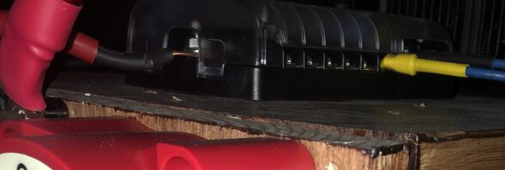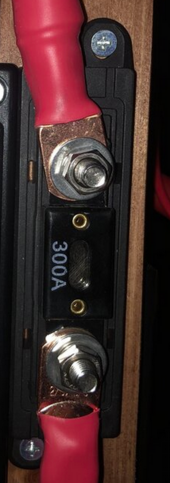I built this little 12v system to have some usable power during an outage and maybe run my tv/router/etc for free year round. I have not slid it into its permanent home and hooked up the single 250w rich solar panel I have yet, but I have used the 20a plug in charger I got incase my bank is low and I know a storm is rolling in. First question starts there, what voltage should it be charging to? I unplugged it when the shunt said 13.5v. On the other side of that, when should the Bms trip the low voltage disconnect? They are li time 100ah batteries and I stopped the test at 10.8v. Li time shunt and charger, voltage verified with multimeter.
Just recently got this set up complete and during that testing I noticed a few things getting warm. The 300a anl fuse gets the hottest (170f+) and the temp spreads from there. The 250a breaker gets warmer than the inverter cables. Buss bar is from a car audio place, nickel coated copper and rated for 600a, switch is a 350a blue seas, plan to add a back up bank down the road. Everything between the battery bank and bus bars is 2/0 and only the wire close to the fuse gets warm. It is 1/0 between each battery and from the bus bars to inverter, all ofc, no cca wire in my system.
The small blue seas fuse thing runs a little 2-3a battery charger and usb distribution block, will add a couple 12v LED’s eventually.
Should I up any wire sizes or swap for a different kind of fuse? Any other suggestions/feedback on my set up? Plan to add more panels and run a cable out that I can hook up to my truck if you’re wondering why I have that charge controller.
Just recently got this set up complete and during that testing I noticed a few things getting warm. The 300a anl fuse gets the hottest (170f+) and the temp spreads from there. The 250a breaker gets warmer than the inverter cables. Buss bar is from a car audio place, nickel coated copper and rated for 600a, switch is a 350a blue seas, plan to add a back up bank down the road. Everything between the battery bank and bus bars is 2/0 and only the wire close to the fuse gets warm. It is 1/0 between each battery and from the bus bars to inverter, all ofc, no cca wire in my system.
The small blue seas fuse thing runs a little 2-3a battery charger and usb distribution block, will add a couple 12v LED’s eventually.
Should I up any wire sizes or swap for a different kind of fuse? Any other suggestions/feedback on my set up? Plan to add more panels and run a cable out that I can hook up to my truck if you’re wondering why I have that charge controller.
Attachments
-
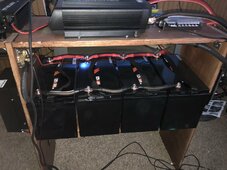 IMG_6473.jpeg264.3 KB · Views: 61
IMG_6473.jpeg264.3 KB · Views: 61 -
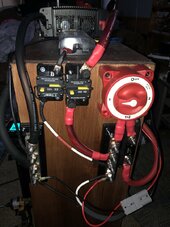 IMG_6465.jpeg167.1 KB · Views: 58
IMG_6465.jpeg167.1 KB · Views: 58 -
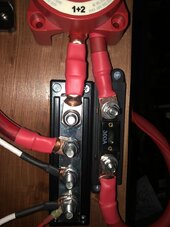 IMG_6466.jpeg154.4 KB · Views: 56
IMG_6466.jpeg154.4 KB · Views: 56 -
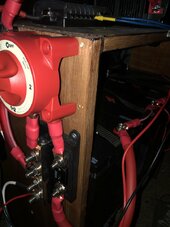 IMG_6468.jpeg129.1 KB · Views: 56
IMG_6468.jpeg129.1 KB · Views: 56 -
 IMG_6475.jpeg133.4 KB · Views: 55
IMG_6475.jpeg133.4 KB · Views: 55 -
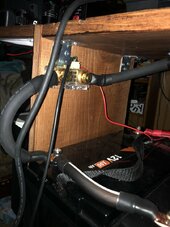 IMG_6470.jpeg158.7 KB · Views: 55
IMG_6470.jpeg158.7 KB · Views: 55 -
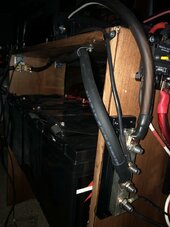 IMG_6469.jpeg134.9 KB · Views: 52
IMG_6469.jpeg134.9 KB · Views: 52 -
 IMG_6471.jpeg63 KB · Views: 53
IMG_6471.jpeg63 KB · Views: 53 -
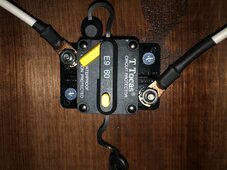 IMG_6472.jpeg339.7 KB · Views: 60
IMG_6472.jpeg339.7 KB · Views: 60




